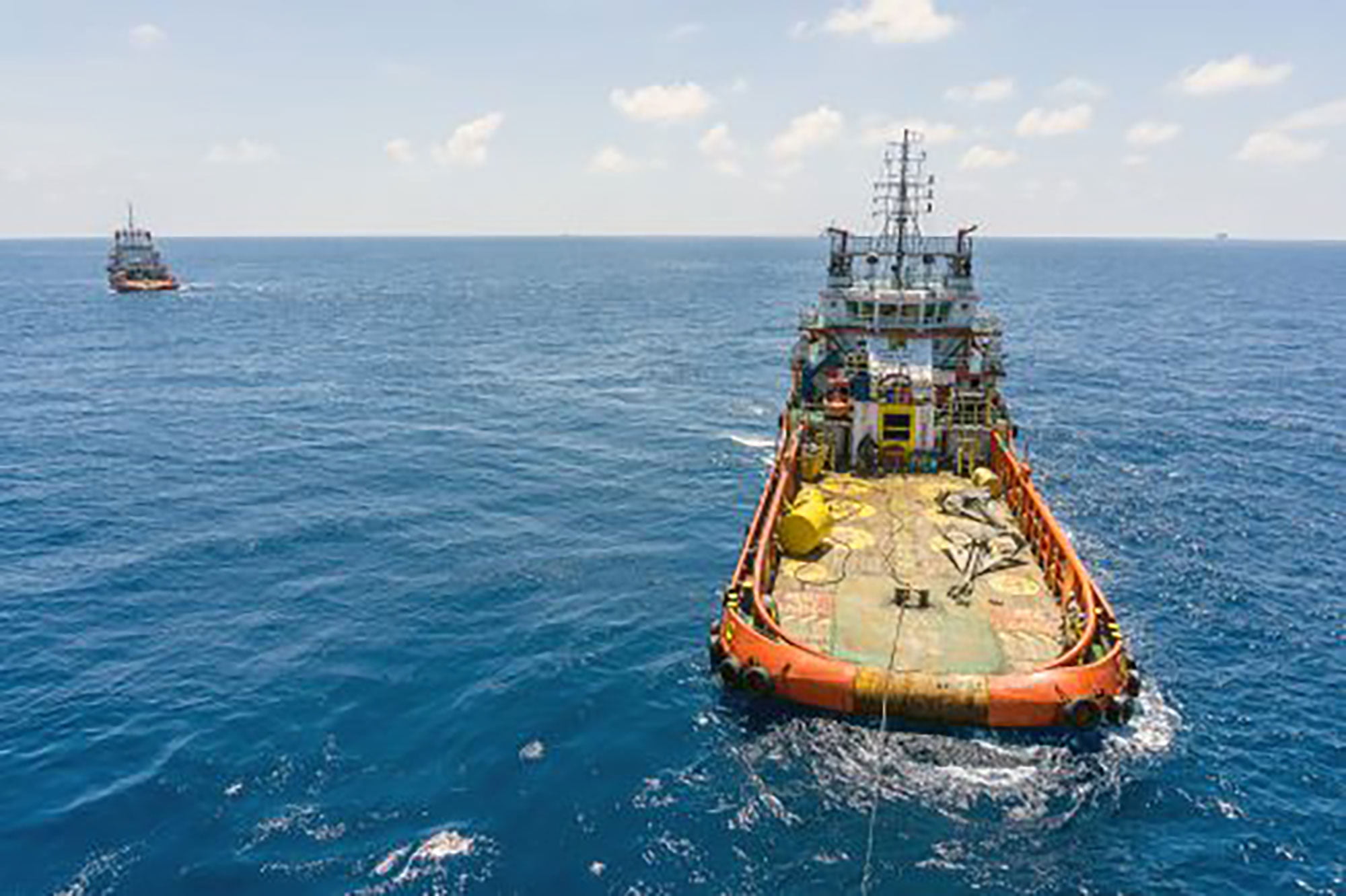Decommissioning projects have been ramping up lately, as mature offshore oil and gas sites reach the end of their commercial lives.
Spirit Energy’s 11,000-tonne DP3 and DP4 platforms sit approximately 30 kilometres west of Blackpool in the East Irish Sea and had been producing gas since 1985 when the South Morecambe field first came online.
However, now disused due to reduced production rate, the installations and their associated pipelines and cables were approved for decommissioning by the Offshore Petroleum Regulator for Environment & Decommissioning (OPRED) in September 2019.
Decommissioning began in 2019 with the plugging of the 12 wells, and the platform topsides have now been removed by Allseas’ 382-metre Pioneering Spirit — the world’s largest vessel — in its first heavy-lift assignment outside the North Sea. The remaining supporting jackets will be dismantled using specialist equipment and transported to shore for component reuse or recycling when the Pioneering Spirt returns to Morecambe Bay in 2023.
As with any decommissioning project, safety at the site is paramount. For offshore locations such as the South Morecambe field, aids to navigation must be provided to minimise the risk of marine collision. In this case, highly visible navigation buoys were assessed and selected to mark off hazardous areas surrounding the platform and establish a safety zone.
Hydrosphere was approached by Spirit Energy to provide navigation buoys to mark out the area around these two decommissioned gas platforms and identify hazards from the remaining equipment and parts on the seabed.
A buoyant solution
Traditionally, the obstruction would be marked using a permanent onboard platform (or ‘skid’) loaded with the relevant navigation aids, whereas buoys would be used as a temporary solution. However, Spirit Energy had requested to mark the site with four cardinal navigation buoys until removal of the jackets in 2023.
For the first time, the relevant authorities granted permission to mark off the site in this way. Since navigation buoys can be placed further from the disused platform, they do not require specialist vessels for maintenance — improving ease of access and offering a more straightforward solution.
We rented eight cardinal buoys (four to mark each site) to Spirit Energy for this project. The Mobilis JET 7000 was selected because it is a large buoy suitable for offshore locations where high visibility is required and can be maintained using small vessels. The focal plane also stands at five metres — offering a much taller (and, therefore, more visible) solution when compared to other buoys.
Each buoy was fitted with a five-mile VLB-36 white light, using the relevant flash characters for the north, south, east and west buoys. Spirit Energy also requested a tracking facility to monitor the buoys’ positions. We included an iridium tracker with geofencing; if a buoy drifts outside of the safety zone, the tracker will sound an alarm and pinpoint the buoy’s position, enabling Spirit Energy to make arrangements to retrieve it.
Mooring line considerations
There were several considerations to take into account when choosing the most suitable mooring for the job.
Although the platforms are not in particularly deep water — the DP3 platform lies in 22 metres of water, while DP4 lies at a water depth of 25 metres — the Irish Sea can experience rough conditions with eight to 10-metre waves and strong winds, particularly in winter. As always, we used the IALA-approved CALMAR mooring line calculation software to determine the correct mooring length, chain size and sinker for these conditions.
The JET 7000 provides up to 7000 kilograms of buoyancy and good reserve buoyance, even at maximum load — making it ideal for this environment.
However, another thing to keep in mind was the 500-metre safety zone surrounding the platforms. There are still hazards such as the jacket structure and pipelines on the seabed that will be removed in due course, and Spirit Energy must ensure local fishing vessels operating in the area do not venture too close to these dangers. The chosen 90-metre mooring chains on the buoys have a maximum swing radius of approximately 80 metres — meaning that, even under full load conditions and stretched to the full chain length, the buoys will not extend beyond the 500-metre zone.
Deploying in a pandemic
Of course, one of the primary challenges facing the deployment of these navigation buoys was the pandemic. Hydrosphere typically always attends and overlooks the deployment of all the navigation aids we supply; unfortunately, this was not possible on this occasion.
Instead, we decided to work with Bay Towage, a local company based across Morecambe Bay in Barrow-in-Furness, to deploy the buoys. Spirit Energy also wanted response built into the contract to overlook any battery or system failures. By using Bay Towage and their local ‘Torch’ multi-purpose pontoon, we can ensure that a vessel can be on-site in a number of hours and conduct our 12-month inspection without pulling vessels from further afield.
Want to discuss your upcoming decommissioning project and see how we can help with our aids to navigation rental solutions? Contact us today.








